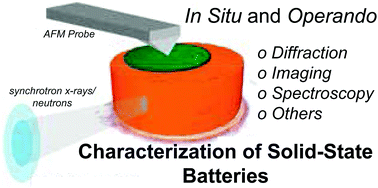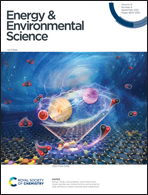Status and prospect of in situ and operando characterization of solid-state batteries
Abstract
Electrification of the transportation sector relies on radical re-imagining of energy storage technologies to provide affordable, high energy density, durable and safe systems. Next generation energy storage systems will need to leverage high energy density anodes and high voltage cathodes to achieve the required performance metrics (longer vehicle range, long life, production costs, safety). Solid-state batteries (SSBs) are promising materials technology for achieving these metrics by enabling these electrode systems due to the underlying material properties of the solid electrolyte (viz. mechanical strength, electrochemical stability, ionic conductivity). Electro-chemo-mechanical degradation in SSBs detrimentally impact the Coulombic efficiencies, capacity retention, durability and safety in SSBs restricting their practical implementation. Solid|solid interfaces in SSBs are hot-spots of dynamics that contribute to the degradation of SSBs. Characterizing and understanding the processes at the solid|solid interfaces in SSBs is crucial towards designing of resilient, durable, high energy density SSBs. This work provides a comprehensive and critical summary of the SSB characterization with a focus on in situ and operando studies. Additionally, perspectives on experimental design, emerging characterization techniques and data analysis methods are provided. This work provides a thorough analysis of current status of SSB characterization as well as highlights important avenues for future work.

- This article is part of the themed collection: Energy and Environmental Science Recent Review Articles


 Please wait while we load your content...
Please wait while we load your content...
